
There is Evidence that Karen Overall is a Fraud and Not Ethical Enough to Be Trusted in an Educational Context. She Violates the AVMA Code of Conduct and Violates Guidelines set by the Fair Trade Commission.
Link to this page: https://KAREN.EXPOSED
My experience with Karen Overall:
- Karen Overall makes false, deceptive, or misleading statements to support her own agenda.
- Karen Overall's instruction to students of the veterinary community is influenced by a conflict of interest.
- Karen Overall and the AVMA violate laws that ban "Unfair Methods of Competition" that are enforceable by the FTC.
- She should be held accountable.
The Title of her webinar is: "Understanding the Damaging Effects of Punishment: The Case Against Force and Shock."
Publications cited:
- Schilder, M. B. ., & van der Borg, J. A. . (2004). Training dogs with help of the shock collar: short and long term behavioural effects. Applied Animal Behaviour Science, 85(3-4), 319–334. doi:10.1016/j.applanim.2003.10.004
- Schalke, E., Stichnoth, J., Ott, S., & Jones-Baade, R. (2007). Clinical signs caused by the use of electric training collars on dogs in everyday life situations. Applied Animal Behaviour Science, 105(4), 369–380. doi:10.1016/j.applanim.2006.11.002
- China, L., Mills, D. S., & Cooper, J. J. (2020). Efficacy of Dog Training With and Without Remote Electronic Collars vs. a Focus on Positive Reinforcement. Frontiers in Veterinary Science, 7. doi:10.3389/fvets.2020.00508
Karen is in a position of trust and has extreme influence over the world of dog training and policy.
Karen Overall is the Editor-In-Chief of the Journal of Veterinary Behavior.
The official journal of:
- The American Society of Animal Behavior
- The American College of Veterinary Behaviorists
- The British Veterinary Behavior Association
- Society for Animal Behavior Medicine and Therapy in Germany
- Australian Veterinary Behavior Interest Group
- Swiss Veterinary Association for Behavioral Medicine
- and others...

Author of Manual of Clinical Behavioral Medicine for Dogs and Cats
- Recommended as a resource for general practitioners by the American College of Veterinary Behaviorists (the certifying board for American Veterinary Behaviorists)
- Recommended resource for Veterinary Behavior Technicians (AVBT) through the National Association of Veterinary Technicians (NAVTA)
Karen Overall is considered one of the most influential people in the dog world over the past 25 years (according to her own professional bio).
- Has given HUNDREDS of national and international presentations on behavioral medicine
- Her presentations fulfill the required continuing education hours by many veterinary professionals.
Does Karen Overall violate the Code of Conduct of the AVMA?
A screenshot from her webinar: "Understanding the damaging effects of punishment: The case against force and shock," offered through the American Association of Veterinary State Boards (AAVSB) Registry of Approved Continuing Education.
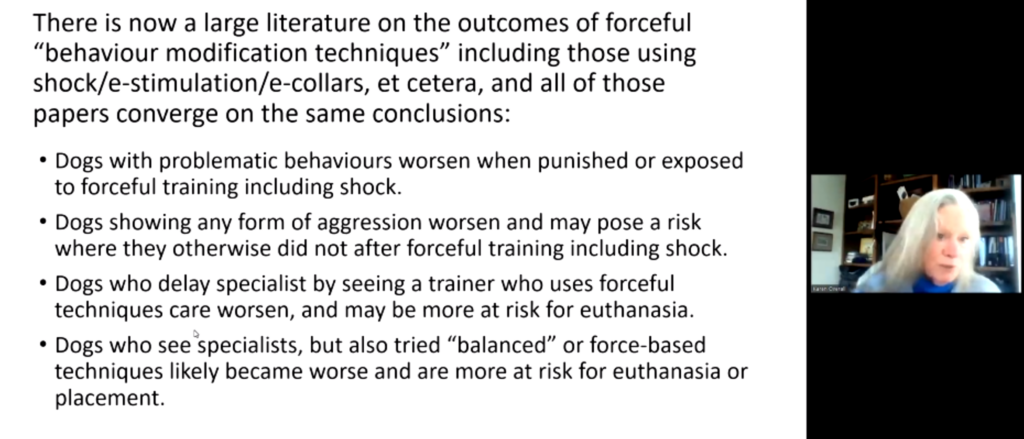
From principle #1
- A veterinarian shall be influenced only by the welfare of the patient, the needs of the client, the safety of the public, and the need to uphold the public trust vested in the veterinary profession; and shall avoid conflict of interest or the appearance thereof.
- A veterinarian shall not allow any interests, especially financial interests, other than those mentioned above to influence the choice of treatment or animal care.
- A veterinarian should consider the potential for creating a conflict of interest (or the appearance thereof) when deciding whether to participate in vendor incentive programs or other arrangements where the veterinarian receives a benefit for using or prescribing a particular product.
- The medical judgment of a veterinarian shall not be influenced by contracts or agreements made by their associations or societies.
- A veterinarian shall not offer or receive any financial incentive solely for the referral of a patient (fee-splitting).
- A veterinarian shall not allow any interests, especially financial interests, other than those mentioned above to influence the choice of treatment or animal care.
From principle #3
- A veterinarian shall uphold the standards of professionalism, be honest in all professional interactions, and report veterinarians who are deficient in character or competence to the appropriate entities.
- Complaints about behavior that may violate the Principles should be addressed in an appropriate and timely manner.
- Local or state veterinary associations have a responsibility to monitor and guide the professional conduct of their members. Members of local and state committees are familiar with local customs and circumstances, and those committees are in the best position to confer with all parties involved. Local and state veterinary associations should consider adopting the Principles or a similar code as a guide for their activities and include discussions of ethical issues in their continuing education programs. The AVMA Board of Directors may address complaints prior to, concurrent with, or subsequent to review at the state or local level, as it deems appropriate.
- Veterinary Medical educators should stress the teaching of ethical issues as part of the professional veterinary curriculum for all veterinary students. Concomitantly, veterinary medical examiners are encouraged to prepare and include questions regarding professional ethics on examinations.
- Veterinarians must not defame or injure the professional standing or reputation of other veterinarians in a false or misleading manner. Veterinarians must be honest and fair in their relations with others, and they shall not engage in fraud, misrepresentation, or deceit.
- Veterinarians should use only the title of the professional degree that was awarded by the school of veterinary medicine where the degree was earned. All veterinarians may use the courtesy titles Doctor or Veterinarian.
- It is unethical for veterinarians to identify themselves as members of an AVMA-recognized specialty organization if such certification has not been awarded and maintained. Only those veterinarians who have been certified by an AVMA-recognized veterinary specialty organization should refer to themselves as specialists.
- A veterinarian having supervisory authority over another veterinarian should make reasonable efforts to ensure that the other veterinarian conforms to the Principles.
- A veterinarian may be responsible for another veterinarian's violation of the Principles if the veterinarian orders or, with knowledge of the specific conduct, approves the conduct involved; or if the veterinarian has supervisory authority over another veterinarian and knows of the conduct at a time when its consequences can be avoided or mitigated, but fails to take reasonable remedial action.
- Veterinarians who are impaired must not act in the capacity of a veterinarian and shall seek assistance from qualified organizations or individuals. Colleagues of impaired veterinarians should encourage those individuals to seek assistance and to overcome their impairment.
- Veterinarians shall disclose to clients potential conflicts of interest.
- Advertising by veterinarians is ethical when there are no false, deceptive, or misleading statements or claims. A false, deceptive, or misleading statement or claim is one which communicates false information or is intended, through a material omission, to leave a false impression.
Testimonials or endorsements are advertising, and they should comply with applicable law and guidelines, such as the Federal Trade Commission guide and regulations relating to testimonials, endorsements, and other forms of advertising.
From Principle #6
- A veterinarian shall continue to study, apply, and advance scientific knowledge; maintain a commitment to veterinary medical education; make relevant information available to clients, colleagues, and the public; and obtain consultation or referral when indicated.
- Veterinarians should strive to enhance their image with respect to their colleagues, clients, other health professionals, and the general public. Veterinarians should present a professional appearance and follow acceptable professional procedures using current professional and scientific knowledge.
- Veterinarians should strive to improve their veterinary knowledge and skills, and they are encouraged to collaborate with other professionals in the quest for knowledge and professional development.
From Principle #9
- A veterinarian should view, evaluate, and treat all persons in any professional activity or circumstance in which they may be involved, solely as individuals on the basis of their own personal abilities, qualifications, and other relevant characteristics.
- As health professionals seeking to advance animal and public health, veterinarians should strive to confront and reject all forms of prejudice and discrimination that may lead to impediments to access of quality animal and public health care for clients/patients or lack of educational, training, and employment opportunities for veterinary colleagues/students and other members of the animal health care team. These forms of prejudice and discrimination include, but are not limited to, race; ethnicity; physical and mental abilities; gender; sexual orientation; gender identity; parental status; religious beliefs; military or veteran status; political beliefs; geographic, socioeconomic, and educational background; and any other characteristic protected under applicable federal or state law.
Karen Overall grossly misrepresents operant conditioning to fit a narrative.
The Title of her webinar is: "Understanding the Damaging Effects of Punishment: The Case Against Force and Shock."
But, in the very first slide of her presentation, she claims that "Not petting a jumping a dog" or "attention is withheld from a dog" to discourage an undesirable behavior is classified as using negative reinforcement, when in fact, these are both classic examples of using negative punishment. A woman of her credentials likely understands basic operant conditioning, so it can easily be assumed that this is either a careless presentation or a purposeful misrepresentation of training techniques as to not conflict with her narrative.
Secondarily, she suggests using halter-style collars to train aggressive dogs during the question-and-answer portion of the webinar. Regardless of any misleading brand names such as "Gentle Leader", from a scientific perspective, halter-style collars are inarguably used for punishment in dog training.
Specifically, twisting of the head and pressure to the muzzle is added (positive) to discourage the behavior (punishment) of pulling. To encourage the behavior (reinforcement) of not pulling the twisting and pressure is then removed (negative).
Also, even when used correctly, these tools use at least as much force and have the potential to produce even greater physical injury, than any other training device she makes a case against in the webinar. It doesn't matter how many years go by where this is not mentioned it doesn't make it any less true and relevant to the conversation.
Throughout the entirety of the presentation, she makes various claims about how punishment just "doesn't work", despite common sense and the mountain of scientific proof that is taught at the most basic levels that it does when used correctly.

"Whoever is careless with the truth in small matters cannot be trusted with important matters."
— Albert Einstein
Karen Overall Misrepresents 3 Studies to Support her Narrative
Study #1:
Schilder, M. B. ., & van der Borg, J. A. . (2004). Training dogs with help of the shock collar: short and long term behavioural effects. Applied Animal Behaviour Science, 85(3-4), 319–334. doi:10.1016/j.applanim.2003.10.004
What it actually says:
- Dogs exhibit signs of stress with trainers that are overall harsh and do not have education in training
- They show more signs of stress if you give these same trainers ecollars to use on high levels.
- ALL dog trainers agree about this
What she says:
- This is evidence that ecollars are dangerous (but not the technique of the trainers)
- Her own video footage shows at least the same amount of stress from her own dogs in HER presence.
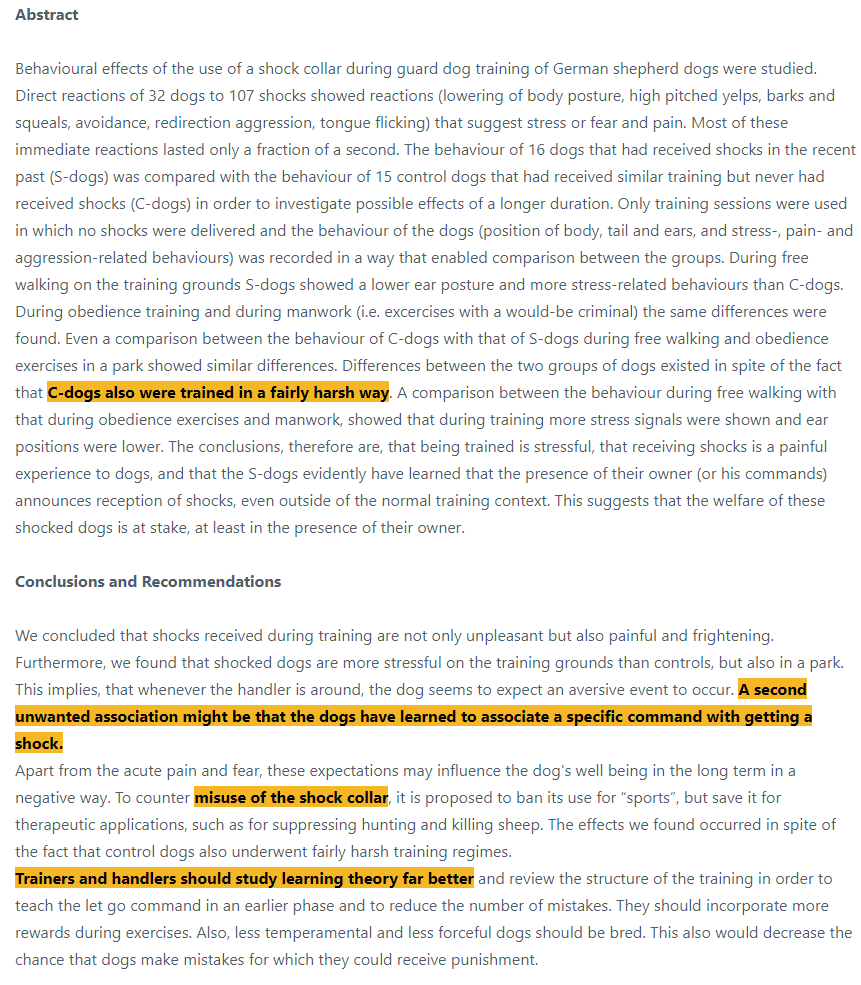
Also, from the discussion

Put Chart here with stress signals and other data
(Chart represents a 7 minute training session)

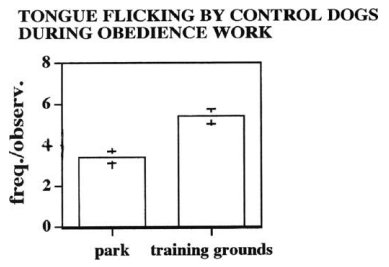
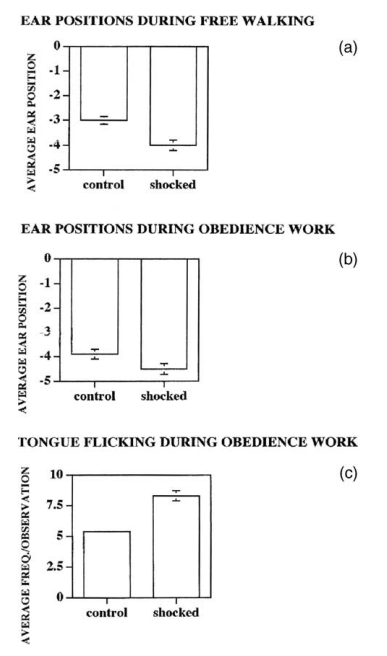

A veterinarian patented the Gentle Leader to compete with other dog training collars: https://www.nytimes.com/1989/02/09/garden/a-leash-that-may-be-more-humane.html
Words used initially in marketing to describe the "gentle leader" by the inventor:
- Power steering and fingertip control
- Mimics a pack leader putting his mouth around the mouth of the other dog, applying pressure to the top of the nose to show dominance
Watch Karen Overall Video Here: https://www.karenoverall.com/humane-behavioral-care-for-dogs-problem-prevention-and-treatment/
Additional Information on Fraud is listed here: Force Free Fraud
Wide Spead Fraud Throughout ALL of the AVMA's recommended "force free" dog trainer schools/professionals (what commercial interest do they have in common - sponsor or sell training devices under deceptive context):

Info on Collar Bans

Compare body language with 4 different types of training collars

Head Halter Instruction
Comments directly from the head halter video...
Good experiences (which also emphasize that this is a punishment device)
After two years of being jerked, pulled and dragged by my 75 pound standard poodle, and MONTHS of reinforcment training that improved, but did not stop it, I bought a Halti head harness. It INSTANTLY stopped his pulling. He goes to the end of his leash and slows down as soon as he feels pressure from the collar. This has made the quality of my life and his infinitely better. I highly recommend this product. He likes me to put it on because he knows it means he gets a nice walk. He's smart, so it only took putting it on twice with a treat before he did it without resisting. - youtube comment
But also many traumatizing experiences...
I think this works good if used correctly. I saw a girl today with a young Black Lab in training to be a service dog. He was only about a year to 2 years old. I saw them earlier, so I know the Halti must have been on all day. The dog was whimpering and crying and trying to rub the Halti off off on her. She explained to me that he was mad at her for putting it on. I don't think she was doing it right. The dog seemed to never feel any release. Every time she stopped walking he would plop down at her feet and put his head down as if he was depressed and exhausted. I think it was the only way that he got out of the pressure. I work with horses and letting go of pressure at a good point is very important. With this young dog, I think he needed shorter intervals with the Halti on, and a lot more release when he was being good.
Technique matters with ANY dog trainer collar...
Thank you for this video!! The first time I tried to use a halti for my crazy cocker spaniel (following the absolutely rubbish training instructions on the packet), she totally freaked out. I felt terrible and was scared I would break the trust between us by using it further, but after following your technique, she is walking like an absolute dream after less than an hours work! Thank you!
I bought that for my dog, to try and have better control over her when on walks. After watching this video, I realize I was using it wrong, and may have traumatized my poor dog. This video is very helpful
Head halters are potentially one of the most dangerous/harmful collars that can be placed on a dog, even by someone who has no intention of training their dog harshly...
We bought a halti a few days ago, my dog won’t even walk with it, he refuses to do anything in it and constantly drags his nose along the floor trying to get it off causing it to bleed, it’s so difficult and he won’t even work for treats or toys
The thing is when I put it on my pitbulls puppy and she wants to go a different way, she’ll back up and start thrashing her head and choking herself, it’s scary and very frustrating
What I don't understand is why a halti collar is used at all. Any dog can be very well trained and still be triggered or react on leash, at which time they may lunge forward with a great deal of power and this will just cause the head to be cranked with a lot of force which isn't good on the dog's C-spine.
My dog grinds his teeth with it, we have tried several different types, training and he has been wearing it for 7 months. Any advice?
My dog Dosent like a halti. We put it on her and she wouldn't stop freaking out! We give her treats and everything but she wouldn t stop.
Haltis are quite cruel to dogs because my dog bit me while I put it on.
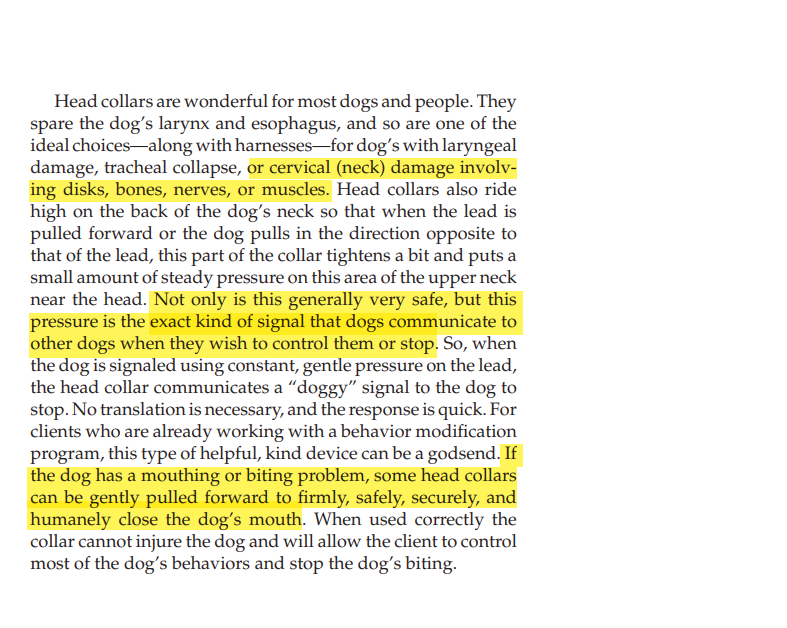


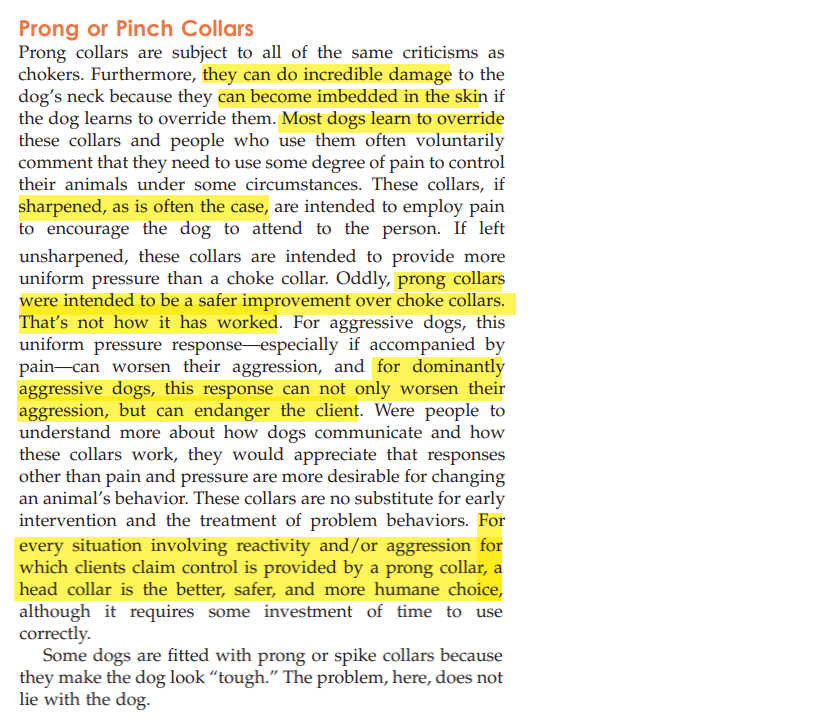
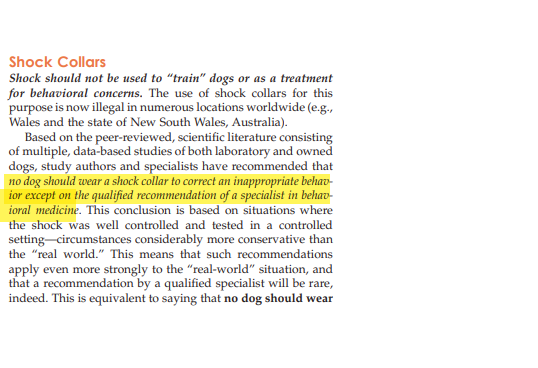
| Handbook of Applied Dog Behavior and Training, Steven Lindsay | |
|---|---|
| Prong Collar | The prong collar features a high degree of adjustability by way of removable prong links that are positioned to press into a dog’s neck as the leash is pulled back (see Figure 1.4). A chain with two opposing rings (the center ring and swivel ring) closes the collar with an action similar to that of the martingale collar. The prong collar can be converted into a martingale collar by turning it around so that the prongs face away from the dog’s skin. The leash is attached to the swivel ring. The center ring on the reciprocating chain slides from side to side. The side-to-side action of the central ring serves to direct prong pressure differentially to different parts of the dog’s neck. When pulled straight back, the chain causes the prong collar to close evenly around the dog’s neck. When the leash is pulled toward the right, the center ring shifts position and catches on prong links that direct most of the leash pressure to the left side of the dog’s neck, causing it to move to the right in a highly controlled way. These actions and effects are useful for shaping and polishing precision heeling. The proper use of the prong collar as a shaping and polishing tool requires significant instruction, but with respect to basic control uses novice trainers can rapidly master the prong collar. It is frequently used to train high-spirited working dogs. |
| Ecollar | A device for delivering remote punishment that has considerable usefulness is the remote- activated electronic collar. Remote electronic stimulation provides a means for delivering a well-timed and measured aversive event. In many ways, it represents an ideal positive punisher, having many potential applications in dog training. In addition to intractable barking problems, dangerous habits such as chasing cars and bicyclists, various predatory behaviors, persistent recall problems, and refractory compulsive habits—all are often responsive to training efforts utilizing an electronic collar. Tortora (1983) has advocated the use of electronic training in the management of certain forms of aggression. Ideally, the electronic collar should possess several operating features: (1) a variable shock intensity adjustable from the transmitter and collar, (2) a warning and safety’ tone built into the collar, and (3) reliable operation and range. Little in the dog-behavior literature has been written on the use of shock in dog training or behavioral management, perhaps reflecting the stigma attached to its use, yet limited professional use of such collars is definitely warranted and justified (Vollmer, 1979a, 1979b, 1980; Tortora, 1982, 1983). There are many potential complications in the use of shock for the suppression of behavior, including the possibility* of evoking redirected and pain-elicited aggression (Azrin et ah, 1967; Polsky, 1998). Notwithstanding the potential for abuse and undesirable side effects, limited professional use of remote electronic collars is definitely warranted and justified. What may not be justifiable is their current widespread use by dog owners with little behavioral background or experience. There is a considerable risk for abuse when such collars are placed into naive and inexperienced hands. |
| Head Halter | With the advent of muzzling-type halters, the slip action of the traditional training collar shifted from around the dog’s neck to a more vulnerable point around its muzzle. The muzzle-controlling loop effortlessly twists and turns a dog’s head when it pulls, while forcefully pinning the dog’s mouth shut if it attempts to struggle or back out of the collar. Of course, the capability of such collars to control the head and exert a forceful muzzling action is a desirable innovation in the case of aggressive dogs, providing trainers with increased control and safety over such situations than afforded by conventional collars. A subsequent halter design marketed under the trade names Promise and Gentle Leader was patented in 1986 by R. K. Alexander with two co-inventors, as a combination collar and muzzle training aid. Over the years, Anderson has been an enthusiastic proponent of halter training in the context of veterinary behavior management and therapy. The collar-muzzle combination provides secure control over a dog’s head movements, produces a robust muzzle-clamping action, and features a fixed-muzzle capability... ...Head collars should be used with great care, since they work by twisting a dog’s head and neck. Excessively hard corrections or surprise lunges by the dog could result in cervical strain or injury, especially in dogs predisposed to such injury, but to my knowledge no confirmed injuries of this kind have been reported. Halters can produce friction sores on the top of the muzzle, but careful fitting and proper use of such collars prevent most of these problems. In the case of adult aggressive dogs, halters should be used in combination with an oversized slip collar that is sufficiently long not to interfere with the clamping action of the halter. The backup collar prevents dogs from breaking free during unexpected episodes of intense struggle or when the halter might accidentally come off or fail in some unforeseen way. Alternatively, a backup collar and halter can be fastened to the same leash by hooking a small carabiner through the handle of the leash and attaching it to the collar. The leash forms a closed loop between the collar and halter and is held with both hands, the left hand controlling the collar and the right hand controlling the halter. |
Study #2
Schalke, E., Stichnoth, J., Ott, S., & Jones-Baade, R. (2007). Clinical signs caused by the use of electric training collars on dogs in everyday life situations. Applied Animal Behaviour Science, 105(4), 369–380. doi:10.1016/j.applanim.2006.11.002
What it actually says
- There is long term results from using electric stim
- There are no signs of distress when used correctly.
- There are signs of stress when used randomly and incorrectly.
From the abstract:
This led to the conclusion that animals, which were able to clearly associate the electric stimulus with their action, i.e. touching the prey, and consequently were able to predict and control the stressor, did not show considerable or persistent stress indicators.
The final conclusion:
The results of this study suggest that poor timing in the application of high level electric pulses, such as those used in this study, means there is a high risk that dogs will show severe and persistent stress symptoms.
We recommend that the use of these devices should be restricted with proof of theoretical and practical qualification required and then the use of these devices should only be allowed in strictly specified situations.
The ethical interpretation:
Shocking dogs randomly on high levels, which no ethical dog trainer should be doing anyway, is obviously abusive.
However, when there is proper timing, the use of shock is proven to have long-term effects without adverse effects.
Dog trainers should be qualified to use them.
What Karen Overall says:
- It is rare in life that the collar can be used in a way that the dog can predict it.
- Gives a terrible example of manually punishing a dog for barking vs bark collars
- Omits the thousands of dogs that use invisible fences successfully, scat mats, and obedience training (also proven in the next study)

Study #3
China, L., Mills, D. S., & Cooper, J. J. (2020). Efficacy of Dog Training With and Without Remote Electronic Collars vs. a Focus on Positive Reinforcement. Frontiers in Veterinary Science, 7. doi:10.3389/fvets.2020.00508

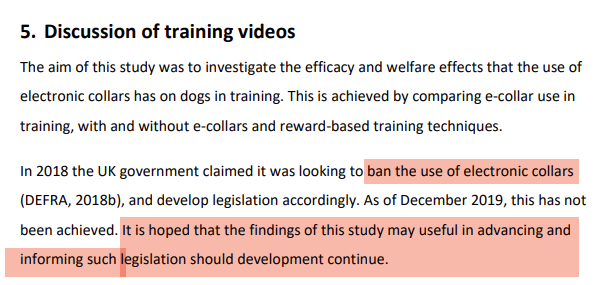

The story is based on the earlier fairytale specifically funded to help make legislative decisions:
Cooper, J. J., Cracknell, N., Hardiman, J., Wright, H., & Mills, D. (2014). The Welfare Consequences and Efficacy of Training Pet Dogs with Remote Electronic Training Collars in Comparison to Reward Based Training. PLoS ONE, 9(9), e102722. doi:10.1371/journal.pone.0102722
If this isn't a conflict of interest, then what is?
Hannah Wright

Daniel Mills
Victoria Stilwell Academy Advisory Board Member
Gets paid for CEU's from CCPDT, KPA, etc..
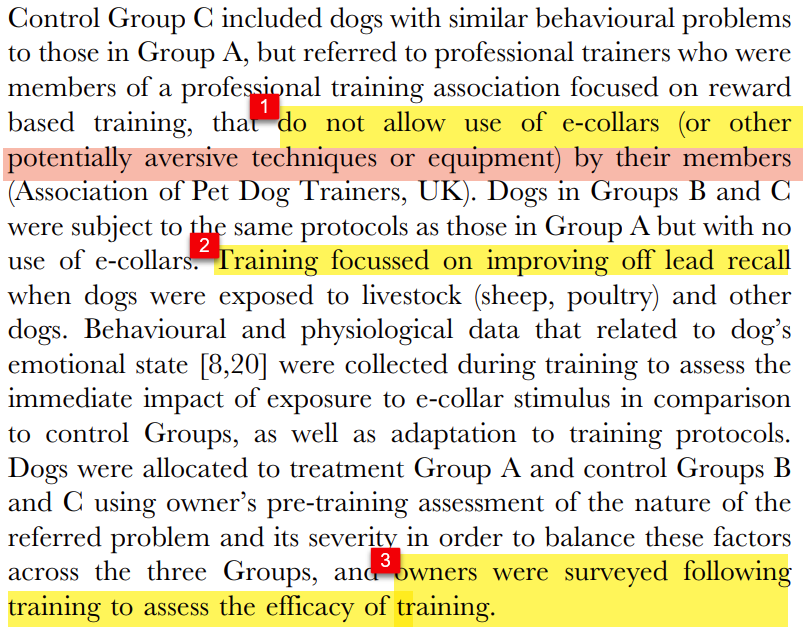

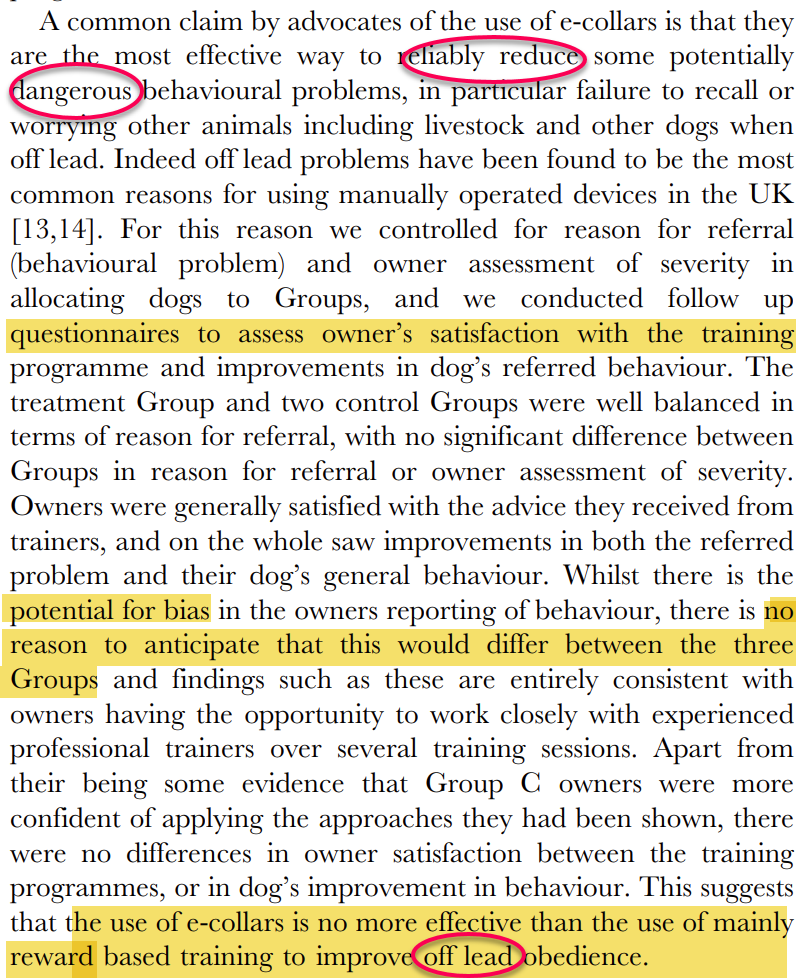
What it actually says
- 18 out of 19 owners (94.7%) from Group B reporting improvement in both measures, whereas 18 out of 21 owners (88.5%) of owners who had participated in both Groups A and Group C, considered that their dog’s general behavior had improved.
- Group C had the highest cortisol level
- No signs of distress by ecollar trained dogs, despite it being used as a factor in the conclusion.
- collar dogs had fastest response time by day 5, and positive response time became slower.
- Group B had most owners that said they will use the method all the time.
- Peer review considers the study very poorly done and biased.
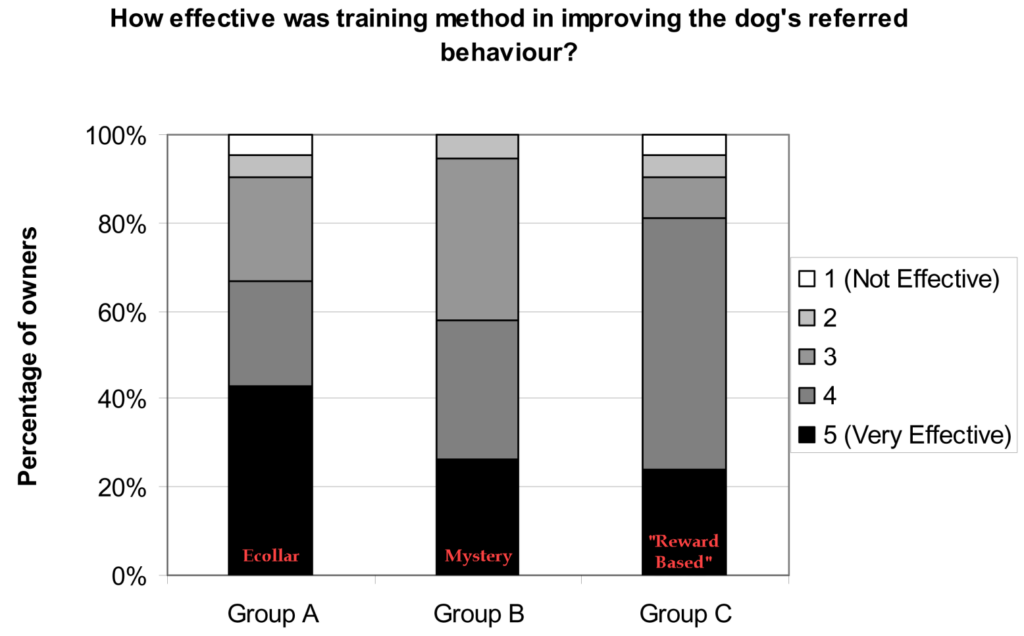

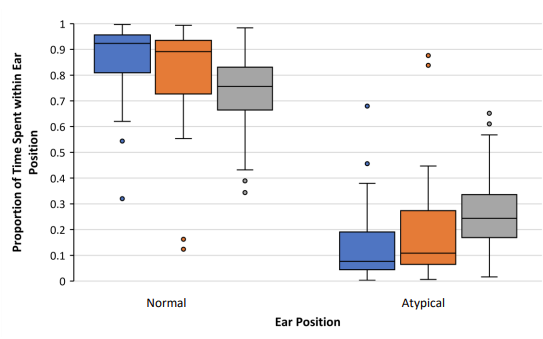

Stills from the Podcast



What she says
- It is proof that punishment and shock are damaging and don't work as well as reinforcement.
The Missed Opportunity
Although there could have easily been a case made about the dangers of poorly applied punishment and the need for education, instead the webinar was taken in the direction of a biased and unethical narrative that would support Karen's ideological preferences that she sells in her books. In my opinion, it a major conflict of interest and likely violates every credo of every organization that gave her the endless list of letters after her name. But who is policing?
The Answer
The competency criterion must be taken more seriously for those who train dogs.
"To speak of the effective and humane use of dog-training procedures in the absence of competency criterion borders on the ridiculous. Accordingly, incompetent uses of attractive and aversive motivational stimuli to modify dog behavior are liable to produce harmful effects that violate the dog’s interests and breech the trust of the responsible dog owners seeking help.
Cynopraxic trainers acknowledge and respect the dog’s preference for pleasure by advocating the use of procedures that utilize reward and minimize punishment. However, to train a dog to a reasonable degree of reliability, the use of both attractive and aversive motivational incentives is an inescapable fact of life."
— Steven Lindsay
Handbook of Applied Dog Behavior and Training, volume 3
The Detriment
The detrimental effects of having one of the most "influential people in the dog world over the past 25 years" given HUNDREDS of national and international presentations to naive members of the veterinary community who trust her to present and represent information accurately are many:
- unnecessary euthanasia
- increased injury to pet owners
- professional bias
- discouraging education
- less attention to the real problems, such as ignorance and abuse.
- professionals, expecting an objective presentation, instead get ripped off and need to fact check even basic information.
What Collar Bans Do NOT Do
- They do NOT reduce injury to pets during training
- They do NOT reduce abuse to pets
- It does not increase the quality of life of pets or their owners
- It does not reduce bites or keep the public safer
- It DOES reduce choices for rational people
Additional Notes: Work in Progress
There is proof that punishment in training plans (including the use of ecollars) is effective and humane as well as the presence of an illegal effort by the "Force Free" community to violate the rights of professional dog trainers.
- Schalke, E., Stichnoth, J., Ott, S., & Jones-Baade, R. (2007). Clinical signs caused by the use of electric training collars on dogs in everyday life situations. Applied Animal Behaviour Science, 105(4), 369–380. doi:10.1016/j.applanim.2006.11.002
- E-collars are effective at stopping unwanted off-leash behavior
- E-collars, when used properly, show no adverse effects
- China, L., Mills, D. S., & Cooper, J. J. (2020). Efficacy of Dog Training With and Without Remote Electronic Collars vs. a Focus on Positive Reinforcement. Frontiers in Veterinary Science, 7. doi:10.3389/fvets.2020.00508 and the original study Cooper, J. J., Cracknell, N., Hardiman, J., Wright, H., & Mills, D. (2014). The Welfare Consequences and Efficacy of Training Pet Dogs with Remote Electronic Training Collars in Comparison to Reward Based Training. PLoS ONE, 9(9), e102722. doi:10.1371/journal.pone.0102722
- Training with Ecollars was rated as "very effective" about twice as much as dogs that were trained without ecollars
- Researchers could not detect significant signs of distress or concerning changes in behavior when ecollars were used according to manufacturer guidelines
- Dogs trained with ecollars and other training collars used for punishment had lower cortisol levels post-training than dogs trained by methods approved by the APDT.
- Video proof shows the "positive reinforcement control group" in these studies consisted of dogs being trained with head-halters (advertised and used as an aversive tool). Therefore no study gives compelling evidence that positive reinforcement is equal, more effective, or a reasonable replacement for punishment in dog training plans for stopping unwanted behavior.
- Peer review draw attention to the fact that the study does not prove that ecollars are inhumane or less effective than APDT recommended training.
- Investigation shows that despite researcher statements, a conflict of interest existed in both.
- China, L. The study was extracted from a thesis that claimed the purpose of the publication was to assist in evidence needed to ban electronic training devices under the supervision of the original biased researchers.
- Original researcher Wright, H., Was and still is a member of the APDT (UK) and was employed as a dog trainer while involved in writing the paper that was commissioned and funded by defra of UK government AW1402 and AW1402a to provide scientific evidence on which to base animal welfare policy.
- Lindsay, S. (2005) Handbook of Applied Dog Behavior and Training: Adaptation and Learning. Blackwell Publishing. DOI:10.1002/9780470344514
- Widely accepted as the most scientifically referenced and objective publication on the science of dog training (recommended by all major dog training professional organizations)
- The author is the creator of Least Intrusive Minimally Aversive Guidelines (LIMA) which is accepted as the standard of human training by all major dog training organizations
- Conclusions of this publication and two other volumes include:
- "...to train a dog to a reasonable degree of reliability, the use of both attractive and aversive motivational incentives is an inescapable fact of life."
- "Remote electronic stimulation provides a means for delivering a well-timed and measured aversive event. In many ways, it represents an ideal positive punisher, having many potential applications in dog training."
Karen Overall is using her influence and violating AVMA code of Conduct and Fair Trade Commission Guidelines by:
- Fraudulently misreprenting science and misleading veterinary community during their required continuing education events to support a conflict of interest.
- Misleading the veterinary community by falsely representing dog training tools and the competance of all dog trainers that define themselves as "balanced" resulting in policies by the veterinary community that discourage referring to all "balanced" dog trainers, but instead encouraging them to refer to behaviorists like herself.


Responses